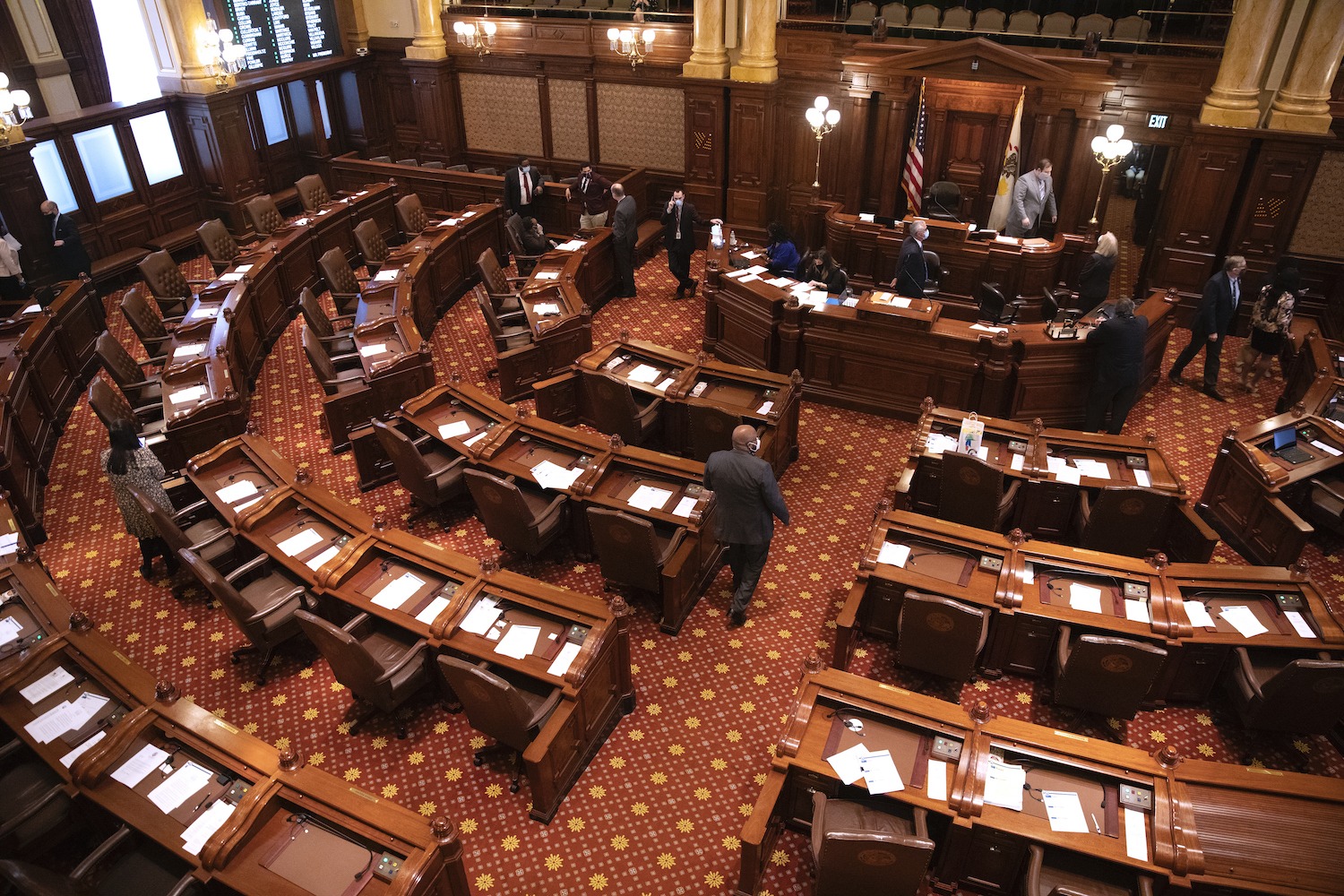On Aug. 8, 2001, George Ryan stood on the steps of the Kankakee County Courthouse and announced he would not seek a second term as governor of Illinois. Ryan’s governorship had been tainted by the licenses-for-bribes scandal, for which he would eventually spend five years in federal prison.
Ryan knew he was un-reelectable, but he used the occasion to take a parting shot at the right wing of his party.
“I worry for the Republican Party — the party of Lincoln under whose banner I have proudly served all of my life,” he said. “If we’re to be successful, we need to listen more and shout less. We need to moderate our positions. I learned a long time ago that winning public office is about addition and not subtraction, and I would hope that the party folks are listening.”
Ryan had once been an archconservative. As speaker of the state House in the early 1980s, he worked with Phyllis Schlafly to stamp out the Equal Rights Amendment. But he won the governorship by running to the left of his Democratic opponent — Southern Illinois congressman Glenn Poshard — on gay rights and abortion. As governor, he instituted a moratorium on the death penalty and, just before leaving office, commuted all death sentences to life in prison.
A map designed to elect 14 Democrats, from the Illinois Redistricting Office.
Like any successful politician, Ryan could tell which way the wind was blowing. In the late 1990s and early 2000s, as America’s Red vs. Blue divide developed, Illinois was turning Blue. In 2002, the Democrats took complete control of the state, winning the governorship for the first time in 30 years and the state senate for the first time in more than a decade. Part of their success was due to the national political trends Ryan had observed; part was due to Ryan himself. As the third and last in a 26-year run of Republican governors, his corruption had damaged the brand of a party that had overstayed its welcome.
Since that watershed election of 2002, Illinois Democrats have never looked back. They now control all six constitutional offices, and hold supermajorities in both houses of the legislature. They’re using that power to consider a congressional remap that would guarantee them 14 or even 15 of the state’s 17 seats. The Democrats won 57 percent of the vote in the last presidential election, but they could get 88 percent of the congressional seats, with the only remaining Republicans penned off in Downstate corn and coal county.
One-party dominance is not unique to Illinois; it’s part of the modern political landscape. In this era of extreme partisanship, state government “trifectas” — in which one party controls the governorship and both houses of the legislature — have become the rule. In 2002, just before Illinois turned Democratic, 30 states had divided government, 11 had Republican trifectas and eight had Democratic trifectas. Now, only 12 states have divided government, while 23 have Republican trifectas and 15 have Democratic trifectas.
A map designed to elect 15 Democrats, from Zach Koutsky, president and CEO of Berteau Consulting.
This has been used as a justification for the Democratic gerrymander: The Republicans are doing it in their states, so we have to counter them. One proposed map puts Freeport and Vandalia in the same super-Republican district. An even more extreme map would create a Republican “vote sink” beginning just above East St. Louis along the Mississippi, traveling as far north as Princeton, then ending up in Robinson near the Wabash River. Both maps have this in common: they place partisan identity above geographic cohesion as an essential interest. The Princeton Gerrymandering Project gave the map an “F” for partisan fairness.
The new congressional map will shove Illinois’s Republicans even deeper into a hole they can’t crawl out of by reducing the party’s representation to its hardest conservative core, making it an exclusively rural, right wing party. When one party is marginalized and has no responsibilities, its fringe elements take over. The leading Republican candidate for governor, state Sen. Darren Bailey of Louisville, is an anti-masker who leads the Eastern Bloc — a caucus of representatives from East Central Illinois, the most conservative section of the state.
There are no serious candidates for the U.S. Senate. Because of Illinois’s composition as a state encompassing the North, the Midlands and the South, Republican Downstate has little in common — politically or culturally — with the Democratic Chicago area, and thus stand little chance of producing candidates with statewide appeal. The Republican Party has become a Trump-centric outfit unable to moderate its positions to suit Illinois, as Ryan pleaded with it to do back in 2001. That’s because in this age of the Internet and cable TV channels, national party identity is stronger than statewide or local party identity.
Is this healthy for democracy in Illinois? Of course not, especially since Illinois has no tradition of good government to put a brake on one-party rule. Even more especially since Illinois is now ruled by the party of Rod Blagojevich, Michael Madigan, Dan Rostenkowski, and the Daley family. Illinois Republicans used to be able to present themselves as the antidote to corrupt Machine politics, but Ryan himself damaged that argument. The Republicans have only themselves to blame for their status as Illinois’s out party, but the Democrats are doing everything they can to make the situation worse.



